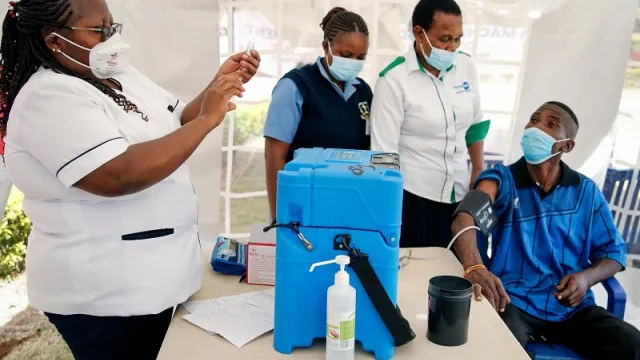Job losses extend by quarter million in first quarter

Job losses extend by quarter million in first quarter
A total of 253,544 workers lost jobs in the three months to March as companies struggled to resume loan payments owing to the economic hit caused by second Covid-19 lockdown.
Kenyans lost 1.7 million jobs in the second quarter of last year at the onset of Covid-19 pandemic as the government imposed curbs on movement, firms shut down and laid off workers due to uncertainties.
Gradual reopening saw jobs pick up as companies hired 1.8 million workers in the third quarter and 421,000 workers at the end of last year with the hope of vaccine breakthrough.
However, news of new variants of the virus and slower distribution of vaccines due to logistical challenges and vaccine apartheid brought back uncertainty that hit company outlook and shelved job growth.
March had also marked the resumption of loan payments after banks lifted moratoriums on debt even as firms faced low demand due to high prices and decimated incomes as a result of hiring freeze and job losses last year.
A second lockdown was imposed on the Nairobi metropolis and Nakuru in mid-March and was lifted at the start of May, as activity picked up further affecting optimism in economic recovery.
Read also: Absa trailblazes social banking revolution in Kenya
The ratio of gross non-performing loans (NPLs) to gross loans stood at 14.2 percent by April as banks pursued repayments and recoveries were in the transport and communication, real estate, tourism, restaurants and hotels and agriculture sectors according to the Central bank of Kenya.
The Stanbic Purchasing Managers Index (PMI) dropped to 50.6, its lowest for nine months in March, as private sector companies reported only a marginal expansion in output and a slowdown in new order growth as cash flow issues limited customer spending.
Slower recovery in the economy has hit private consumption at a time when there has also been a rise in cost of goods due to new taxes, external shocks on currency and oil as well as a slump in agriculture due to lower than average rainfall in the first half of the year.
As a result some companies have opted to stop hiring, continue freezing pay and firing workers or working in shifts at a fraction of pay to preserve cash flow and stay in business.
“Employment numbers increased only modestly, while inventories rose at the slowest rate in the current growth sequence. Rising fuel prices meanwhile led to another sharp uptick in purchase prices, driving further pressure on firms' margins,” Stanbic said in the PMI for March.
The economy has picked up slowly with the World Bank Economic update warning of slower growth in private sector credit due to policy adjustments that may lead to lower investments and consumption.
The Quarterly Labour Force Survey indicates that nearly 2.49 million people were jobless at the end of March, most of who were young people.
Unemployment rate has jumped to 6.6 per cent from 5.4 per cent at the end of last year a major blow to jobseekers, especially the close to one million young people who graduate from various educational institutions every year looking for work and internships.
“The age groups 20-24 and 25-29 continued to record the highest proportion of the unemployed at 16.3 per cent and 9.1 per cent, respectively,” said Macdonald Obudho, Director General, KNBS.



